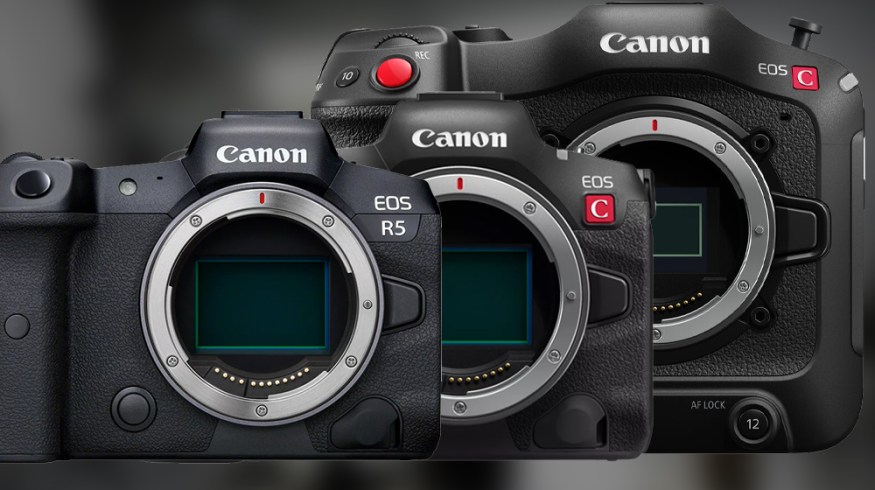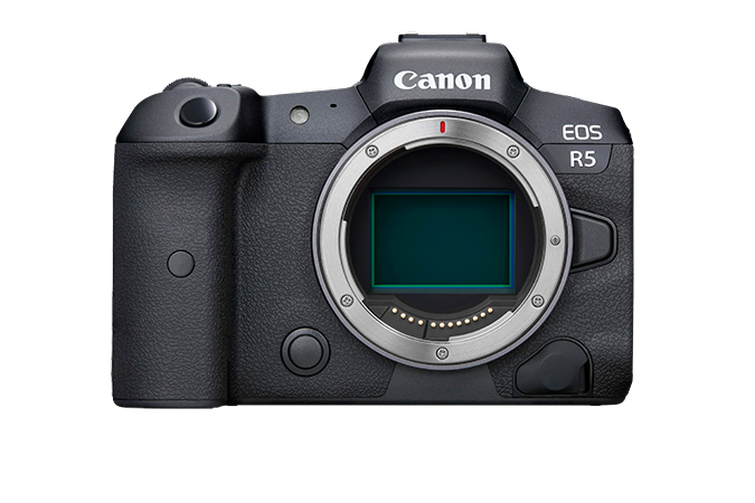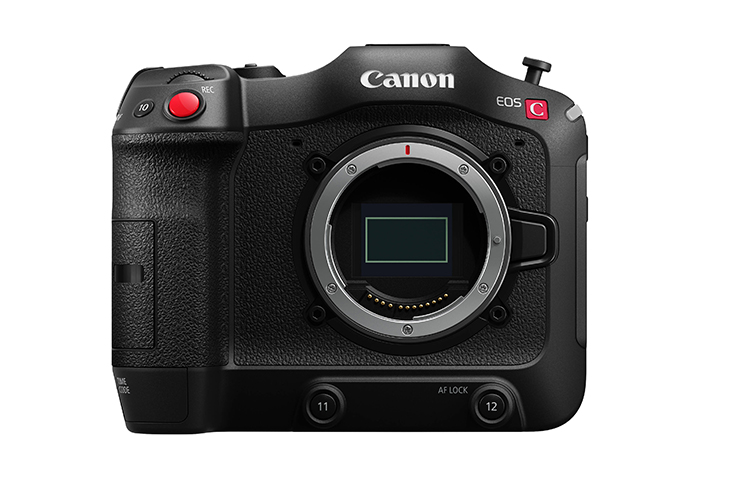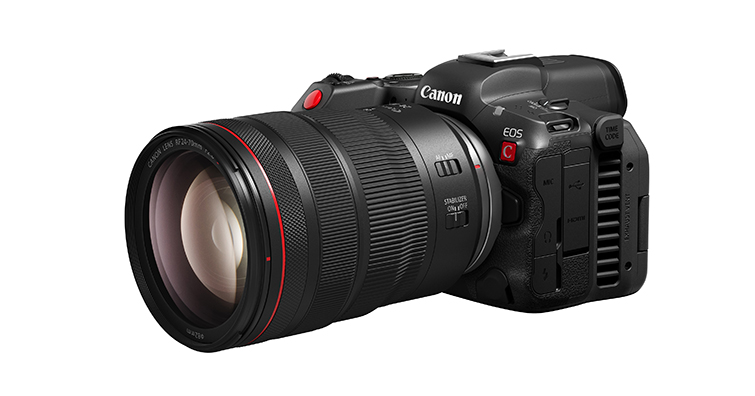
The R5 vs. R5 C vs. C70: Comparing Canon’s (Very) Similar Cameras
We breakdown the pros and cons to these comparable Canon cameras to see which one might be right for you and your video needs.
Just as news drops that the DSLR looks to officially (and finally) be dead, we might have a new king to herald. Long live the new age of the mirrorless cinema camera!
And yet, while Canon’s 5D might have been the most famous camera of the DSLR revolution, it could be argued that we still don’t have a true flagship for this new mirrorless age.
However, with the recent news of a new Canon R5 C, we might have a new contender for this mirrorless crown. That is . . . until you consider the other just as capable and nearly as powerful as other Canon cameras like the Canon R5 and the Canon C70.
It isn’t terribly clear, I know.
So, what differentiates these three surprisingly similar cameras? And, what pros and cons of each should you consider when looking for the right new camera for your film and video needs?
Let’s explore these three Canon competitors to see which might ultimately be the true contender for their new flagship crown.
Canon R5 – $3,899

Let’s start with the Canon mirrorless camera that started it all. (Or, perhaps ended it all if you were a DSLR purist.) No bigger waves have been made in the digital video camera world than the announcement of the R5 with its 8K recording capabilities. Unlike the more poorly received first EOS R camera from Canon (videographers quickly pointed out its flaws), the R5 promised to be the new gold standard for video production.
The results and reviews have been not quite high—I’ll say mixed, at best. (Although for some issues, the camera has gotten better with recent firmware updates.)
Still, from a specs standpoint, the R5 is perhaps the first worth mentioning. With a 45MP full-frame CMOS sensor, the R5 can 8K RAW recording at up to 30fps (and 4K 10-bit internal video up to 120fps).
It’s also great for photographers with 12fps continuous shooting and some great 5-axis sensor-shift image stabilization.
Here are the full specs for the Canon R5:
- 45MP full-frame CMOS sensor
- DIGIC X image processor
- 8K 30 RAW and 4K 120 10-bit internal video
- Sensor-shift 5-axis image stabilization
- 12fps mech. shutter, 20fps e. shutter
- Dual pixel CMOS AF II with 1053 points
- 0.5″ 5.76m-dot OLED EVF
- 3.2″ vari-angle touchscreen LCD
- Subject tracking with deep learning
- CFexpress & SD UHS-II memory card slots
Still, now almost two years old itself, you could say the R5 has already lost ground to other new cameras like Sony’s Alpha 1. The R5 has also perhaps been outclassed by other Canon cameras, with the C70 fixing many of its functionality issues (although, at the expense of 8K) and maybe this new R5 C combining the best of both worlds.
But, we’re getting ahead of ourselves here. Let’s look at the C70 specifically . . .
Canon C70 – $5,499

Announced back in September 2020, the Canon C70 didn’t get the same media blitz that backed the release of the R5. Still, the C70 has quietly built a word-of-mouth name for itself as one of the better go-to cameras for actual working videographers.
While it doesn’t boast 8K video, it offers all the tools and functions of an actual cinema camera while still at a reasonable price compared to Canon’s (and other brands) cine camera lines.
With a Super35 DGO sensor capable of DCI 4K capture at up to 60fps (and with built-in 16+ stops of high dynamic range), the C70 still might be the best run-and-gun Canon camera for documentary filmmakers or working videographers.
Here are the full specs for the Canon C70:
- Super35 dual gain output (DGO) sensor
- DCI 4K 60p, hi-speed UHD 4K 120p/2K 180p
- Canon log 2, 3, PQ & HLG HDR recording
- RF lens mount / EF mount with adapter
- DIGIC DV7 image processor
- 16+ stops of total dynamic range
- Built-in ND filters / auto ISO & gain
- Dual pixel CMOS AF & EOS iTR AF X
- 1 BNC timecode / 2 mini-XLR audio inputs
- Dual SD card slots, LUT/long GOP support
As someone who’s not personally chasing the highest pixel counts as possible, I’d be much more likely to pick up a C70 for a video shoot over an R5.
Let’s move on to the R5 C . . .
Canon R5 C – $4,499

For anyone who might not follow the latest camera releases and news, it might come as a surprise to hear that Canon has already followed up its “flagship” R5 (and its very similar C70) with a new camera.
However, for those of us who are perhaps forced to keep up with these things, it’s of no surprise at all as the camera arms race is raging on in full force.
With new cameras coming out almost every quarter from the likes of Sony, Panasonic, Nikon, and Blackmagic, if you’re not constantly reinventing the wheel and releasing the newest, sexiest camera every conference, then you’re sadly not in the race.
And, while I’d love to say that the Canon R5 C results from this over-production nonsense and is unnecessary, I’d be lying. From the looks of things, this R5 C appears to be a beautiful combination of the best elements of the R5 and the C70.
With its dual photo and cinema capabilities, the R5 C is Canon’s attempt to answer all the qualms of R5 and C70 owners. With a 45MP CMOS sensor, the R5 C can record beautiful 12-bit Cinema RAW Light footage up to 8K (and at 60fps).
It’s also surprisingly tiny and agile—perfect for working videographers and aspiring on-the-run vloggers, as it’s another example of just how compact and audacious a camera can be when a company pushes its technology as far as possible.
Here are the full specs for the Canon R5 C:
- Two cameras in one body: photo + cinema
- 45MP stills, full-frame 8K CMOS sensor
- Photo/video switch changes settings menu
- JPEG/C-RAW, 12-bit Cinema RAW Light
- Dual pixel CMOS AF with eye detection
- CFexpress type-B and SD UHS-II slots
- Dual-slot record, unlimited record time
- Timecode DIN port, multi-function shoe
- 4-channel audio record with XLR adapter
- 13 re-assignable buttons
And, to be honest, that’s probably my most significant and only concern. While the C70 followed the R5 pretty quickly, it also was quite a different camera in the grand scheme of things.
This R5 C appears to be an almost unrealistic mix of better specs and functions than the R5—and with the promise to have solved any issues the R5 had at launch (specifically the overheating).
There are caveats, of course, as the R5 C will be sacrificing its IBIS for its advanced cooling performance. Still, for the right video professional type who might not want IBIS, this might be your perfect camera.

So, let’s break this down into three simple bullet points:
- C70: Ideal for the filmmaker looking to stay within Canon’s compact ecosphere.
- R5: A smart choice for a photographer who also needs excellent video quality.
- R5 C: The perfect camera for the videographer who requires video-first features, but also the use of stills.
Other Options to Consider
Still, we’d be remiss if we made this article only about these Canon cameras. While Canon-heads might be appalled to hear this, Canon is not the only camera manufacturer in the world. And, in many aspects and areas, they’re also not the best.
As we mentioned, while the R5, C70, and R5 C are all tremendous cameras, we have to shout out these other just-as-capable options, like the aforementioned Sony Alpha 1 and the Pansonic S1H, as well as the Nikon Z9 and the Fujifilm GFX 100S.
And, in all honesty, you should take stock in your cameras, gear, and needs before you even think about investing in one of these new cameras. Although, we sure do love to jump on the bandwagon when we have not one of the three awesome cameras to compare and contrast.
For more camera reviews, insights, and guides, check out these additional articles:
- Insta360 Go 2 Review: Too Many Compromises
- Mid-Sized Drones: What Are the Advantages?
- Where to Host Your Podcast in 2022
- How to Fix a Stuck Pixel on the Canon C300 Mk III
- What Makes the iPhone 13’s Cinematic Mode Cinematic?
Cover image via Canon.





